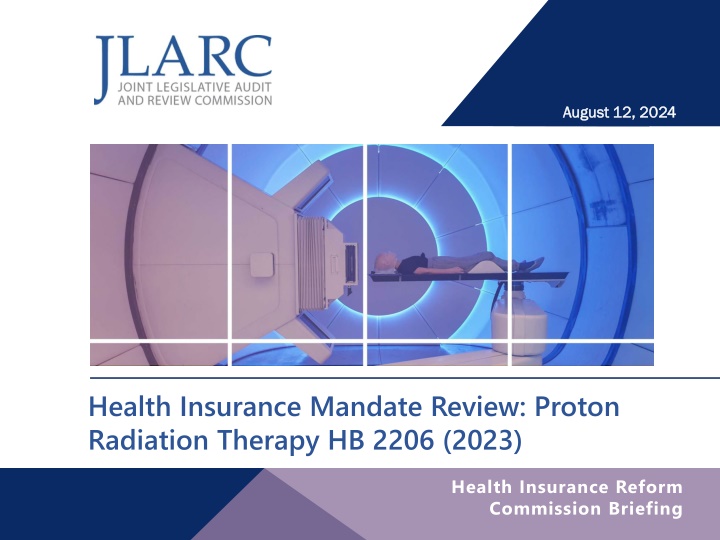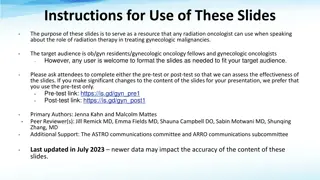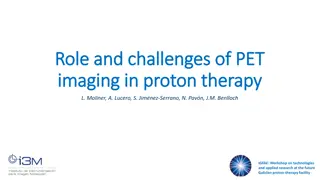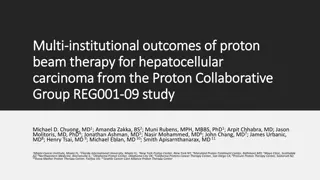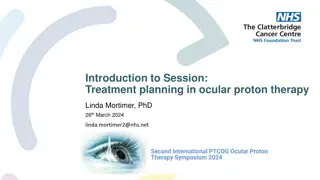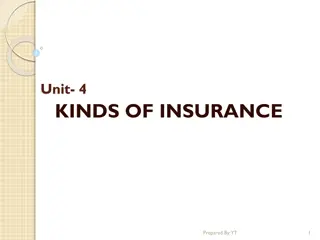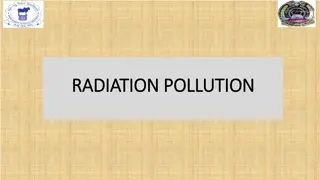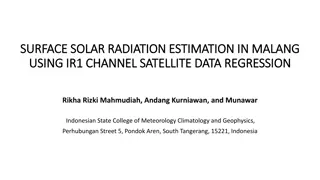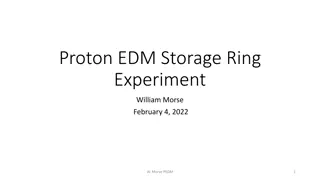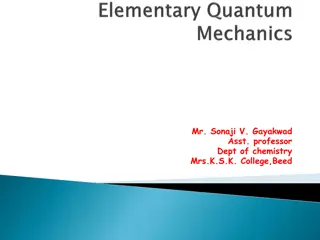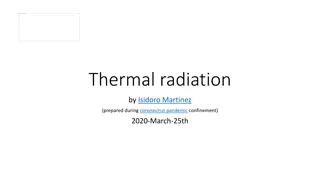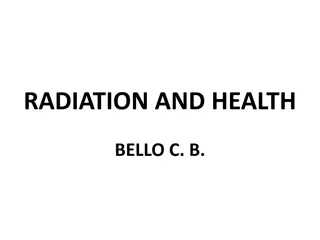Health Insurance Mandate Review: Proton Radiation Therapy HB 2206 (2023)
This presentation reviews HB 2206's impact on insurance coverage for proton radiation therapy. It discusses the therapy's effectiveness, availability, cost, and projected need for cancer treatment in Virginia by 2040. Additionally, it contrasts proton therapy with conventional radiation treatment and addresses financial implications for uninsured individuals.
Download Presentation

Please find below an Image/Link to download the presentation.
The content on the website is provided AS IS for your information and personal use only. It may not be sold, licensed, or shared on other websites without obtaining consent from the author.If you encounter any issues during the download, it is possible that the publisher has removed the file from their server.
You are allowed to download the files provided on this website for personal or commercial use, subject to the condition that they are used lawfully. All files are the property of their respective owners.
The content on the website is provided AS IS for your information and personal use only. It may not be sold, licensed, or shared on other websites without obtaining consent from the author.
E N D
Presentation Transcript
August 12, 2024 August 12, 2024 Health Insurance Mandate Review: Proton Radiation Therapy HB 2206 (2023) Health Insurance Reform Commission Briefing
Questions for JLARC Stage 2 Review Is there evidence that the proposed treatment is effective? How commonly used and available is the proposed treatment? How much does the treatment cost for individuals without insurance coverage? JLARC 2
In Brief HB 2206 would require insurance plans to consider physician recommendation or governmental health coverage to be sufficient clinical evidence to justify coverage of proton radiation therapy. Proton therapy is a safe and effective treatment that is generally accepted as the standard of care for certain types of cancer patients. However, there is not yet sufficient evidence that proton therapy provides improved clinical outcomes over conventional radiation treatment for many common cancers. A small percentage of cancer patients are treated with proton therapy, which is offered at only two facilities in Virginia and can be a substantial cost for individuals without insurance coverage. JLARC 3
In this presentation Background Medical efficacy and use of proton radiation therapy Financial impact on individuals without coverage Coverage provided by HB 2206 JLARC JLARC 4
Projections expect increasing need for cancer treatment in Virginia An average of 41,480 new cancer cases were reported annually in Virginia from 2016-2020 UVA Weldon Cooper Center projections through 2040 predict an increasing cancer incidence rate in Virginia due to an aging population About half of all cancer patients receive radiation therapy as part of their treatment New cancer cases in Virginia from U.S. Cancer Statistics Working Group (U.S. Department of Health and Human Services, Centers for Disease Control and Prevention, and National Cancer Institute) JLARC 5
Radiation therapy is most often delivered via photon-based external beam therapy Radiation can be delivered internally (e.g., brachytherapy) or, more commonly, through external beam therapy Photon beam therapy, a type of external beam therapy where high energy x-rays travel through the body, is the most common form of radiation therapy Proton beam therapy, another type of external beam therapy, delivers energy from positively charged particles into a tumor JLARC 6
Proton therapy can deliver a high radiation dose to a tumor with less exposure to normal tissue Unlike conventional, photon-based radiation, proton therapy has a minimal entry dose and little to no exit dose, which limits excess radiation to normal tissue Protons deliver most of the radiation dose to the tumor, after which the dose falls off to a negligible amount In contrast, conventional, photon-based radiation therapy deposits radiation as it travels through the body and does not stop before exiting JLARC 7
HB 2206 would change clinical evidence standard for coverage of proton radiation therapy Existing Code prohibits insurance plans from denying coverage for proton therapy based on a higher standard of clinical evidence than other types of radiation therapy See December 2023 opinion by Attorney General Miyares HB 2206 would likely make it easier to obtain coverage by requiring the clinical evidence standard for coverage be Treatment is covered by Medicare, Medicaid, or any other governmental healthcare coverage; or Proton therapy is recommended by a patient s treating physician or radiation oncologist JLARC 8
At least three states require some coverage of proton radiation therapy Illinois: effective January 2025, plans covering radiation oncology will be required to include coverage for medically necessary proton therapy; may not apply a higher standard of evidence for coverage Tennessee: state group insurance program must cover hypofractionated proton therapy that is part of a clinical trial for the same reimbursement amount as IMRT* Oregon: plans must provide comparable coverage for treatment of prostate cancer with proton therapy; may not apply a more restrictive utilization review *Intensity-modulated radiation therapy (IMRT) is a technique for delivering photon beam radiation JLARC 9
In this presentation Background Medical efficacy and use of proton radiation therapy Financial impact on individuals without coverage Coverage provided by HB 2206 JLARC JLARC 10
Proton therapy can target tumors that cannot be safely treated with conventional radiation Proton therapy can effectively target certain challenging tumors that require a high dose of radiation but that are located close to critical structures that cannot tolerate the necessary dose (e.g., optic nerve, spinal cord, brain stem) Proton therapy can allow re-irradiation for patients who have already received the maximum lifetime dose of radiation to a nearby normal structure (e.g., a healthy organ) and who have tumor recurrence JLARC 11
Proton therapy reduces the dose of radiation to healthy tissue, which may reduce side effects Proton therapy reduces the exposure of healthy tissue to radiation, which can potentially reduce short- and long- term side effects that affect quality of life and future health (e.g., reduced developmental problems in pediatric cancers) Reduced radiation exposure likely decreases the risk of secondary cancer, according to medical experts and research literature However, evidence on the extent to which proton therapy results in improved outcomes varies across cancers JLARC 12
In practice, proton therapy is generally accepted as beneficial for certain cancers and patients Proton therapy is generally accepted as beneficial compared with conventional radiation for certain cancers and cases, including: Pediatric cancers Re-irradiation Base of skull tumors Certain brain, spine, or central nervous system cancers Certain eye cancers Certain liver cancers Based on interviews with medical experts, research literature, and insurance coverage guidelines JLARC 13
Proton therapy lacks sufficient clinical evidence of improved outcomes for many common cancers For most cancers, proton therapy has similar effectiveness to conventional radiation in terms of cancer reduction While research supports that proton therapy reduces side effects for some cancer patients, data from large randomized trials does not yet exist to conclude that for many types of cancer, proton therapy causes less side effects than conventional radiation For example, medical experts report that IMRT (an advanced photon technique) can effectively mitigate side effects resulting from prostate cancer treatment JLARC 14
Ongoing clinical trials will provide additional data Phase III randomized control trials are currently underway comparing proton and photon radiation therapies for several types of cancers, including: Prostate Esophageal Glioblastoma Lung Liver Breast Clinical trial IDs: NCT01617161, NCT04083937, NCT05055648, NCT03801876, NCT04536649, NCT01993810, NCT03186898, NCT0429137 JLARC 15
Only two centers in Virginia currently offer proton therapy Virginia currently has two proton radiation centers: Hampton University Proton Therapy Institute Inova Mather Proton Therapy Center in Fairfax Washington, D.C., has two proton radiation centers JLARC 16
Small percentage of cancer patients in Virginia receive proton radiation therapy From 2018 to 2023, state employee health plans covered proton therapy for 15 members, compared with 552 members who received coverage for IMRT In 2022, Medicaid covered proton therapy for 63 members, compared with 1,202 members who received coverage for IMRT Inova Mather Proton Therapy center administered about 300 new courses of proton therapy annually in 2022 and 2023 Patients receiving proton therapy require multiple sessions Hampton University declined to provide proton therapy utilization data requested by JLARC JLARC 17
In this presentation Background Medical efficacy and use of proton radiation therapy Financial impact on individuals without coverage Coverage provided by HB 2206 JLARC JLARC 18
Cost of proton therapy is substantial Proton therapy centers currently are more costly to build and operate than conventional photon radiation centers The cost of treatment with proton therapy is typically higher than photon therapy The cost of a course of proton therapy varies depending on the type and complexity of the cancer and the number of sessions required An illustrative estimate for the out-of-pocket cost of a typical course of 30 treatments is $74,955 to $96,510 for just the proton therapy delivery* Hampton University and Inova declined to provide comprehensive treatment cost estimates to JLARC. Both offer financial assistance programs. *According to Inova, around 30 sessions is most typical for patients. Calculation is based on Inova s publicly posted discounted charge rate. It only includes the cost of proton therapy delivery and not any other services or procedures associated with the treatment. JLARC 19
In this presentation Background Medical efficacy and use of proton radiation therapy Financial impact on individuals without coverage Coverage provided by HB 2206 JLARC JLARC 20
Insurance plans already typically offer some coverage of proton radiation therapy Code of Virginia prohibits health plans from holding proton therapy to a higher standard of clinical evidence than other types of radiation in coverage decisions Medicare, Medicaid, state employee health plans, and private insurance plans offer varying levels of coverage for proton radiation therapy Medicare typically provides coverage for a greater range of cancers For many cancers, coverage decisions are on a case-by- case basis JLARC 21
HB 2206 would lower the standard of clinical evidence for proton therapy coverage HB 2206 would require that physician recommendation or governmental health plan coverage be sufficient to meet the standard of clinical evidence to justify proton radiation therapy, whereas payers currently follow varying coverage guidelines In practice, HB 2206 would likely require insurance plans offering cancer therapy coverage to expand the number of cancers for which proton radiation therapy is covered For example, proton therapy for prostate cancer is often not currently covered by many private insurers or state employee health plans JLARC 22
HB 2206 would apply to insurance plans covering approximately one-quarter of Virginians JLARC 23
JLARC staff for this report Kimberly Sarte, Associate Director Dillon Wild, Senior Legislative Analyst Laura White, Senior Associate Legislative Analyst JLARC JLARC http://jlarc.virginia.gov/ http://jlarc.virginia.gov/ (804) 786 (804) 786- -1258 1258
Appendix: Literature reviewed Ahmed, S. K., & Keole, S. R. (2023). Proton therapy in the adolescent and young adult population. Cancers, 15(17), 4269. Baumann, B. C., et al. (2020). Comparative effectiveness of proton vs photon therapy as part of concurrent chemoradiotherapy for locally advanced cancer. JAMA Oncology, 6(2), 237-246. Boer, C. G., et al. (2022). Substantial sparing of organs at risk with modern proton therapy in lung cancer, but altered breathing patterns can jeopardize target coverage. Cancers, 14(6), 1365. Bryant, C. M., et al. (2021). Consensus statement on proton therapy for prostate cancer. International Journal of Particle Therapy, 8(2), 1-16. Chen, Z., et al. (2023). Proton versus photon radiation therapy: A clinical review. Frontiers in Oncology, 13. Doig, M., et al (2022). Can we compare the health-related quality of life of childhood cancer survivors following photon and proton radiation therapy? A systematic review. Cancers, 14(16), 3937. Eaton, B. R., et al. (2015). Secondary malignancy risk following proton radiation therapy. Frontiers in Oncology, 5, 261. Holt, F., et al. (2023). Proton beam therapy for early breast cancer: A systematic review and meta-analysis of clinical outcomes. International Journal of Radiation Oncology* Biology* Physics. JLARC 25
Appendix: Literature reviewed Kirby, A. M., et al. (2023). Should patients requiring radiotherapy for breast cancer be treated with proton beam therapy?. BMJ, 381. Mohamed, N., et al. (2022). Proton beam radiation therapy treatment for head and neck cancer. Precision Radiation Oncology, 6(1), 59-68. Mohan, R. (2022). A review of proton therapy Current status and future directions. Precision Radiation Oncology, 6(2), 164-176. Mohan, R., & Grosshans, D. (2017). Proton therapy Present and future. Advanced drug delivery reviews, 109, 26-44. Mutter, R. W., et al. (2021). Proton therapy for breast cancer: A consensus statement from the Particle Therapy Cooperative Group Breast Cancer Subcommittee. International Journal of Radiation Oncology* Biology* Physics, 111(2), 337-359. Peterson, R. K., & King, T. Z. (2023). A systematic review of pediatric neuropsychological outcomes with proton versus photon radiation therapy: A call for equity in access to treatment. Journal of the International Neuropsychological Society, 29(8), 798-811. Poon, D. M., et al. (2022). Proton therapy for prostate cancer: Challenges and opportunities. Cancers, 14(4), 925. JLARC 26
Appendix: Literature reviewed Solidum, J. G. N., et al. (2022). Proton beam therapy for esophageal cancer. Cancers, 14(16), 4045. Vapiwala, N., et al. (2021). A pooled toxicity analysis of moderately hypofractionated proton beam therapy and intensity modulated radiation therapy in early-stage prostate cancer patients. International Journal of Radiation Oncology* Biology* Physics, 110(4), 1082-1089. Verma, V., et al. (2018). Quality of life and patient-reported outcomes following proton radiation therapy: A systematic review. JNCI: Journal of the National Cancer Institute, 110(4), 341-353. Wu, Y. Y., & Fan, K. H. (2022). Proton therapy for prostate cancer: Current state and future perspectives. The British Journal of Radiology, 95(1131). Xiang, M., et al. (2020). Second cancer risk after primary cancer treatment with three dimensional conformal, intensity modulated, or proton beam radiation therapy. Cancer, 126(15), 3560-3568. Zhou, P., et al. (2023). Efficacy and safety in proton therapy and photon therapy for patients with esophageal cancer: A meta-analysis. JAMA Network Open, 6(8). JLARC 27
Appendix: Medical experts interviewed UVA School of Medicine VCU School of Medicine Eastern Virginia Medical School (EVMS) Hampton University Proton Therapy Institute Inova Schar Cancer Institute JLARC 28
